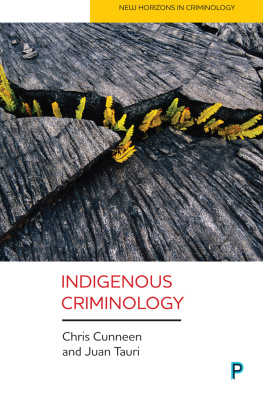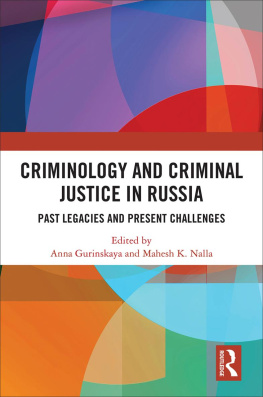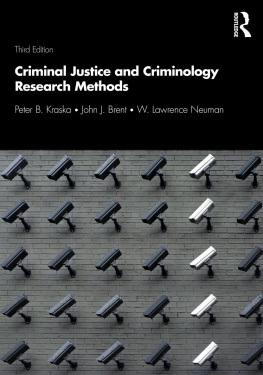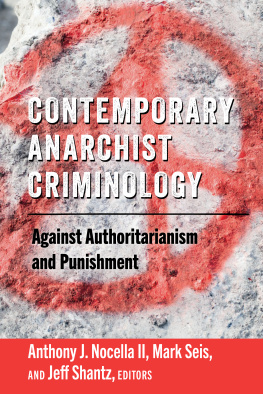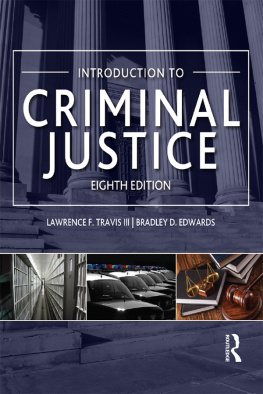Travis C. Pratt - Key Ideas in Criminology and Criminal Justice
Here you can read online Travis C. Pratt - Key Ideas in Criminology and Criminal Justice full text of the book (entire story) in english for free. Download pdf and epub, get meaning, cover and reviews about this ebook. year: 2010, publisher: SAGE, genre: Politics. Description of the work, (preface) as well as reviews are available. Best literature library LitArk.com created for fans of good reading and offers a wide selection of genres:
Romance novel
Science fiction
Adventure
Detective
Science
History
Home and family
Prose
Art
Politics
Computer
Non-fiction
Religion
Business
Children
Humor
Choose a favorite category and find really read worthwhile books. Enjoy immersion in the world of imagination, feel the emotions of the characters or learn something new for yourself, make an fascinating discovery.

- Book:Key Ideas in Criminology and Criminal Justice
- Author:
- Publisher:SAGE
- Genre:
- Year:2010
- Rating:3 / 5
- Favourites:Add to favourites
- Your mark:
- 60
- 1
- 2
- 3
- 4
- 5
Key Ideas in Criminology and Criminal Justice: summary, description and annotation
We offer to read an annotation, description, summary or preface (depends on what the author of the book "Key Ideas in Criminology and Criminal Justice" wrote himself). If you haven't found the necessary information about the book — write in the comments, we will try to find it.
Key Ideas in Criminology and Criminal Justice — read online for free the complete book (whole text) full work
Below is the text of the book, divided by pages. System saving the place of the last page read, allows you to conveniently read the book "Key Ideas in Criminology and Criminal Justice" online for free, without having to search again every time where you left off. Put a bookmark, and you can go to the page where you finished reading at any time.
Font size:
Interval:
Bookmark:

 | SAGE Publications, Inc. 2455 Teller Road Thousand Oaks, California 91320 E-mail: | SAGE Publications India Pvt. Ltd. B 1/I 1 Mohan Cooperative Industrial Area Mathura Road, New Delhi 110 044 India |
| SAGE Publications Ltd. 1 Olivers Yard 55 City Road London EC1Y 1SP United Kingdom | SAGE Publications Asia-Pacific Pte. Ltd. 33 Pekin Street #02-01 Far East Square Singapore 048763 |
Key ideas in criminology and criminal justice / Travis C. Pratt, Jacinta M. Gau,
Travis W. Franklin.
p. cm.
Includes bibliographical references and index.
ISBN 978-1-4129-7013-6 (cloth : alk. paper)
ISBN 978-1-4129-7014-3 (pbk.: alk. paper)
1. Criminology. 2. Criminal justice, Administration of. I. Gau, Jacinta M., 1982-II. Franklin, Travis W. III. Title.
| HV6025.P66 2011 | |
| 364dc22 | 2010032177 |
| Acquisitions Editor: | Jerry Westby |
| Associate Editor: | Aja Baker |
| Editorial Assistant: | Nichole OGrady |
| Production Editor: | Karen Wiley |
| Copy Editor: | Teresa Herlinger |
| Typesetter: | C&M Digitals (P) Ltd. |
| Proofreader: | Laura Webb |
| Indexer: | Holly Day |
| Cover Designer: | Glenn Vogel |
| Marketing Manager: | Erica DeLuca |



Font size:
Interval:
Bookmark:
Similar books «Key Ideas in Criminology and Criminal Justice»
Look at similar books to Key Ideas in Criminology and Criminal Justice. We have selected literature similar in name and meaning in the hope of providing readers with more options to find new, interesting, not yet read works.
Discussion, reviews of the book Key Ideas in Criminology and Criminal Justice and just readers' own opinions. Leave your comments, write what you think about the work, its meaning or the main characters. Specify what exactly you liked and what you didn't like, and why you think so.

